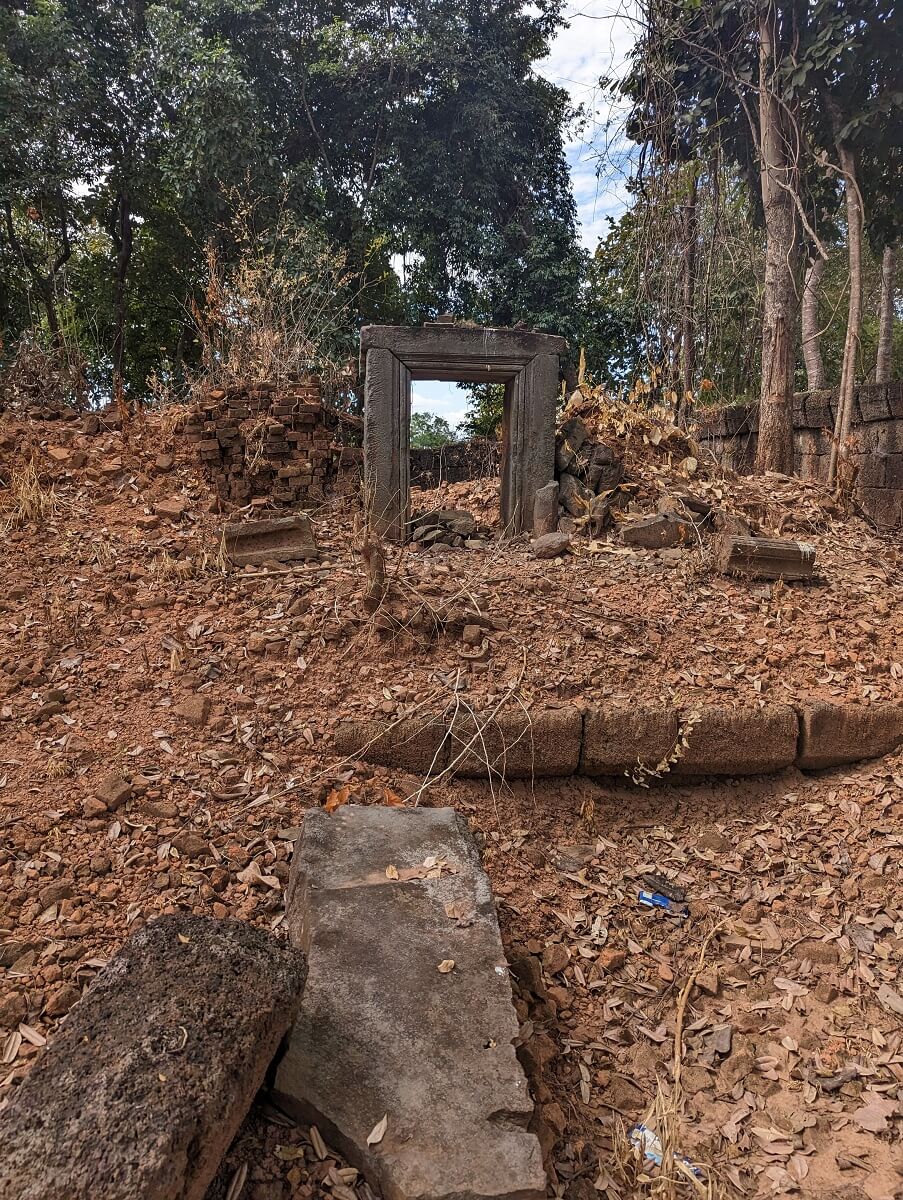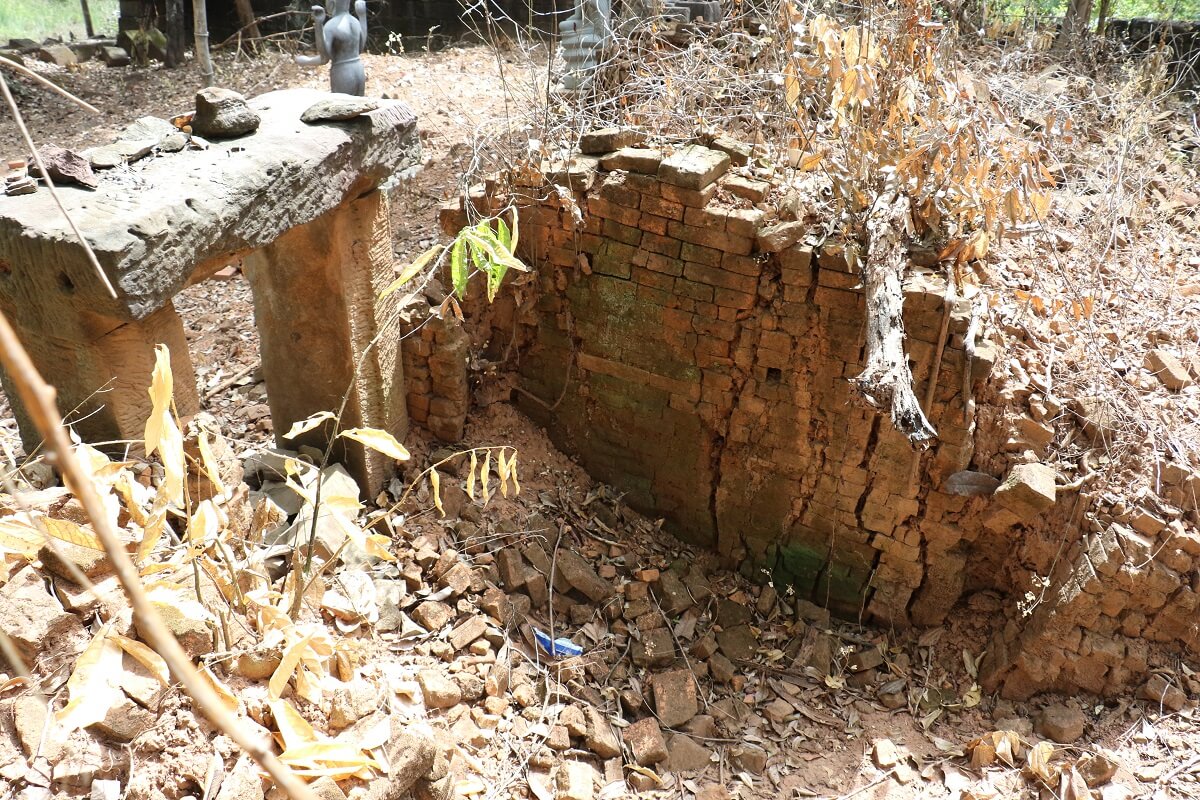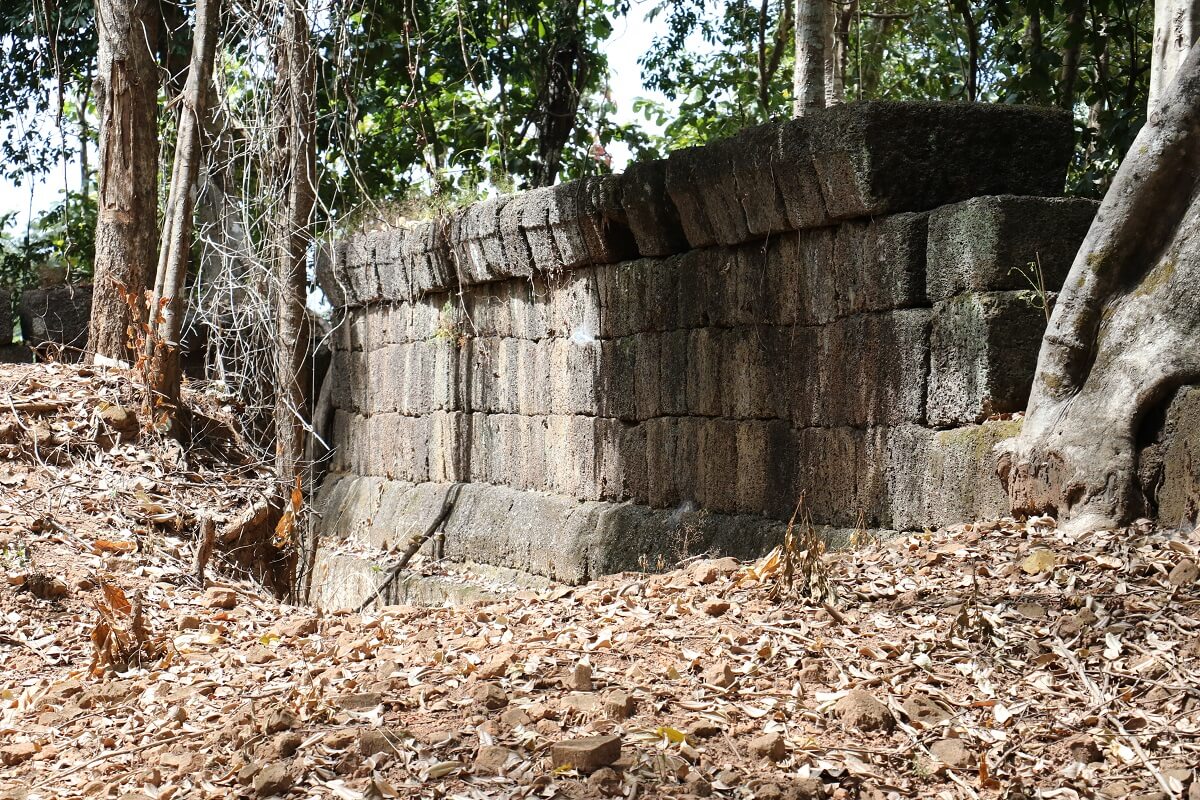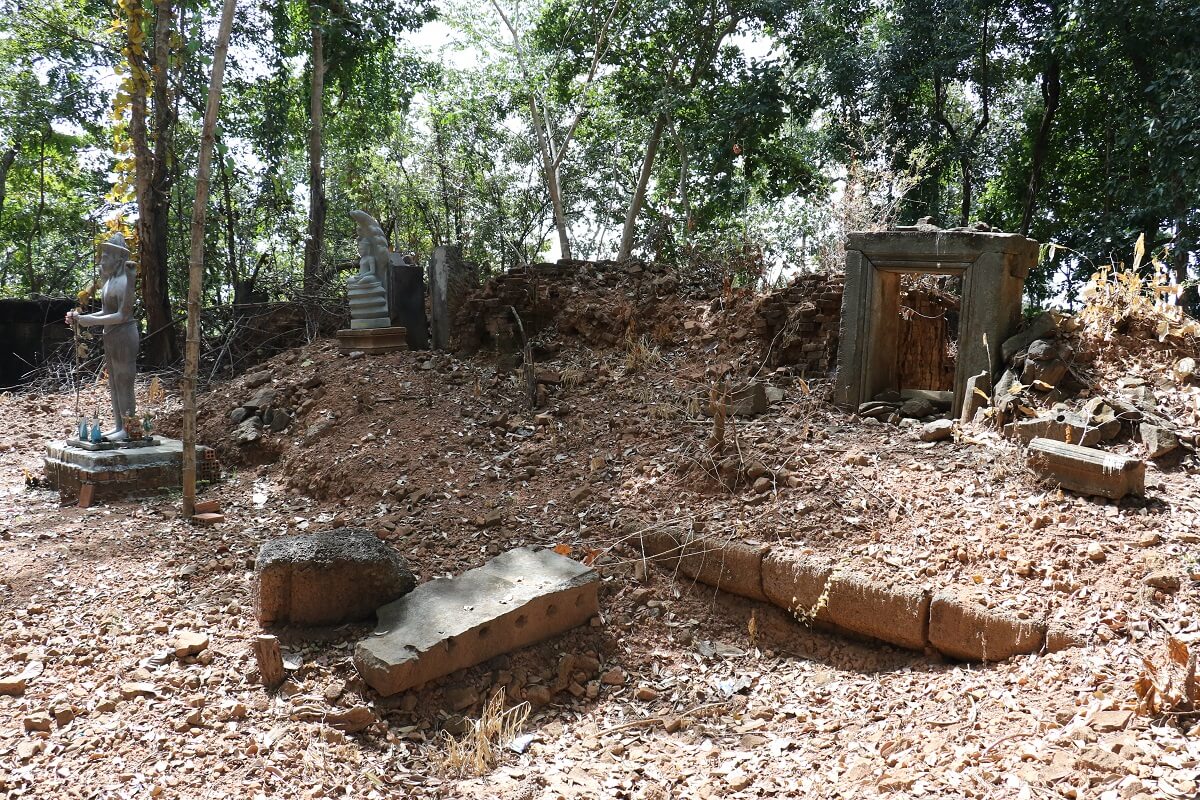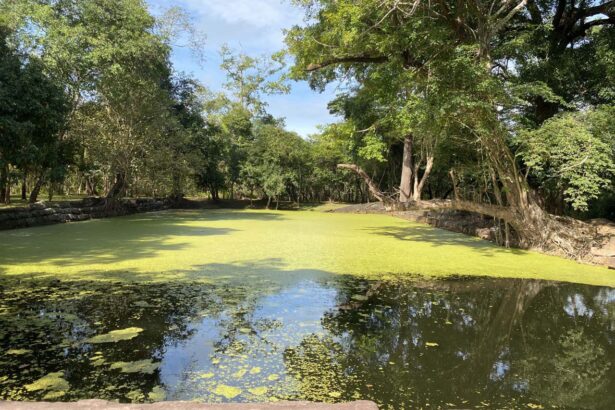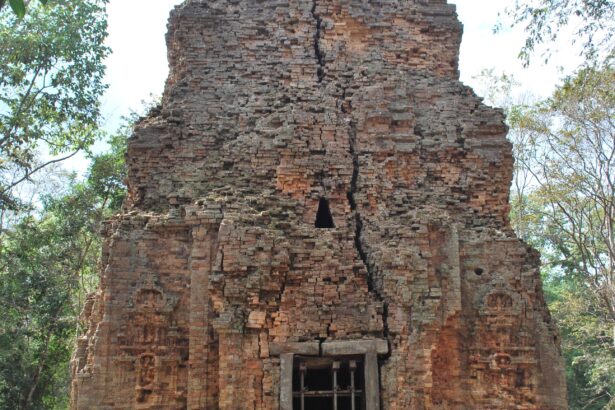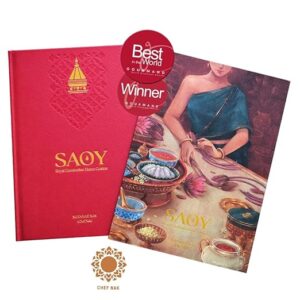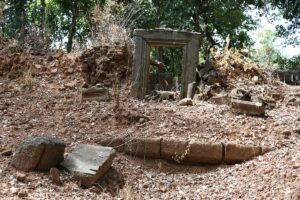
Reul Temple (ប្រាសាទរើល) or Prasat Chamrek Chau of O Pram Pheam village is one of the lesser-known medium ruin temples, built in early 10th century C.E. The temple is Located in O Pram Pheam village of Srayang commune of Kulen district, the temple also known as Chamrek Chau temple, about 6 kilometers south of National Road 64 and 4 kilometer southeast of Prasat Pram.
Probably built in the early 10th century, the site consists of three towers is aligned north-south, but two collapsed, leaving only a quadrangular brick tower surrounded by laterite walls with a gopura on the east and west. These buildings were of brick, open to the east; they are now entirely ruined. Three sandstone door frames with their ornamental features, the carved octagonal colonettes, and decorative lintels.
The enclosure is rectangular, measuring at 24 meters on the east-west axis and 22 meters on its north-south. It is formed by a limonite wall with a high coping of 2.3 m, interrupted by a door without ornamentation in the middle of face west and by a monumental door on the middle of the face east. This gopura was in bricks, with a single passage, through a rectangular room, seen and lit by two windows with three bars open on the exterior facade. The temple is surrounded by a dried-up moat with an east entrance causeway and has a small man-made reservoir to the west of temple site. On the north side of the temple, there is a small pagoda with a monk in residence.
Gallery
